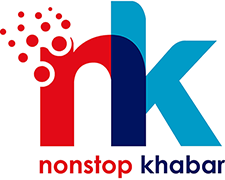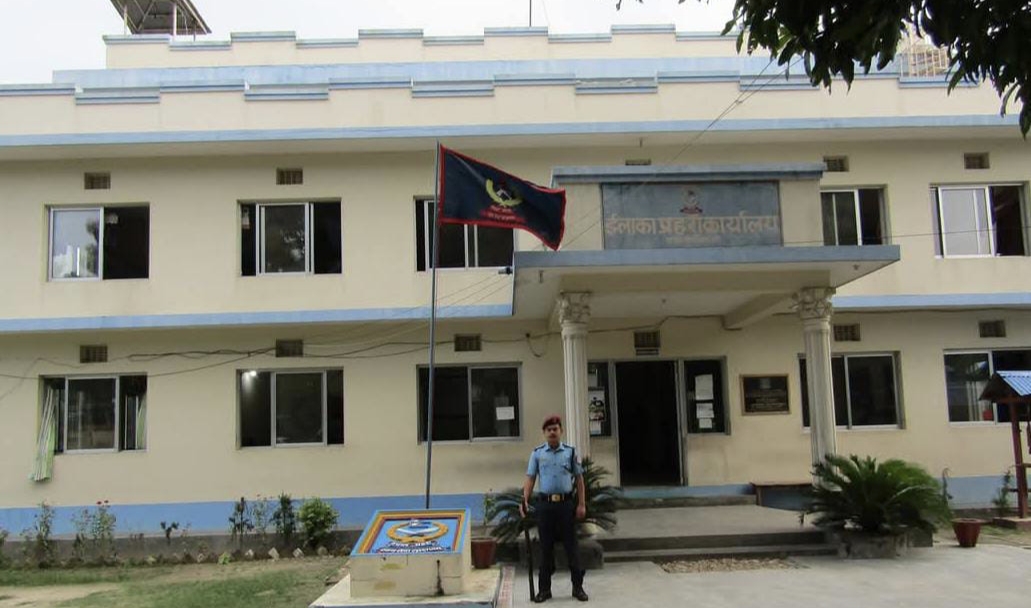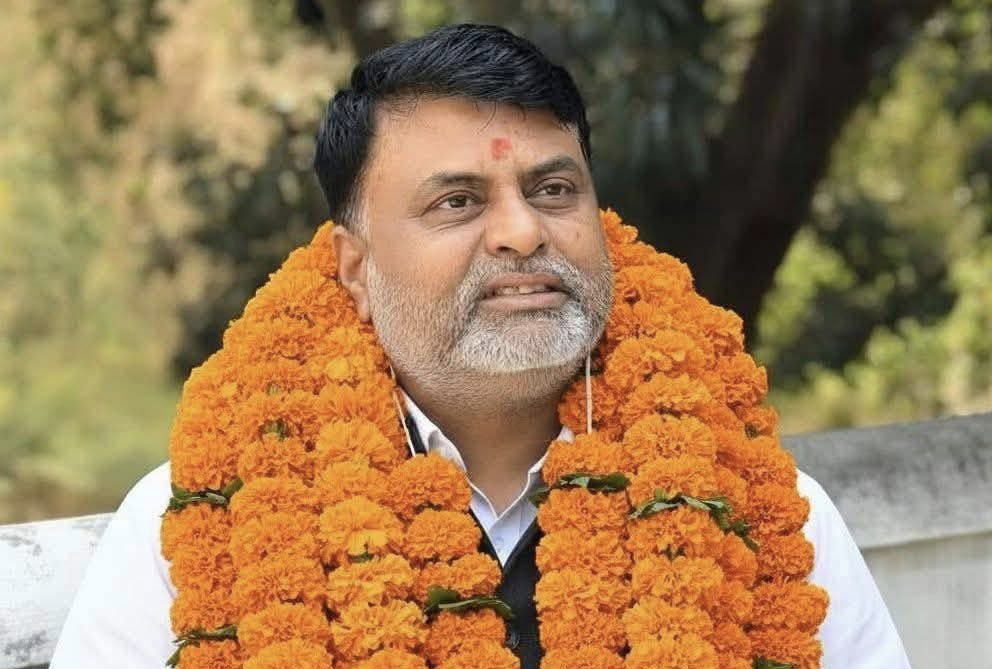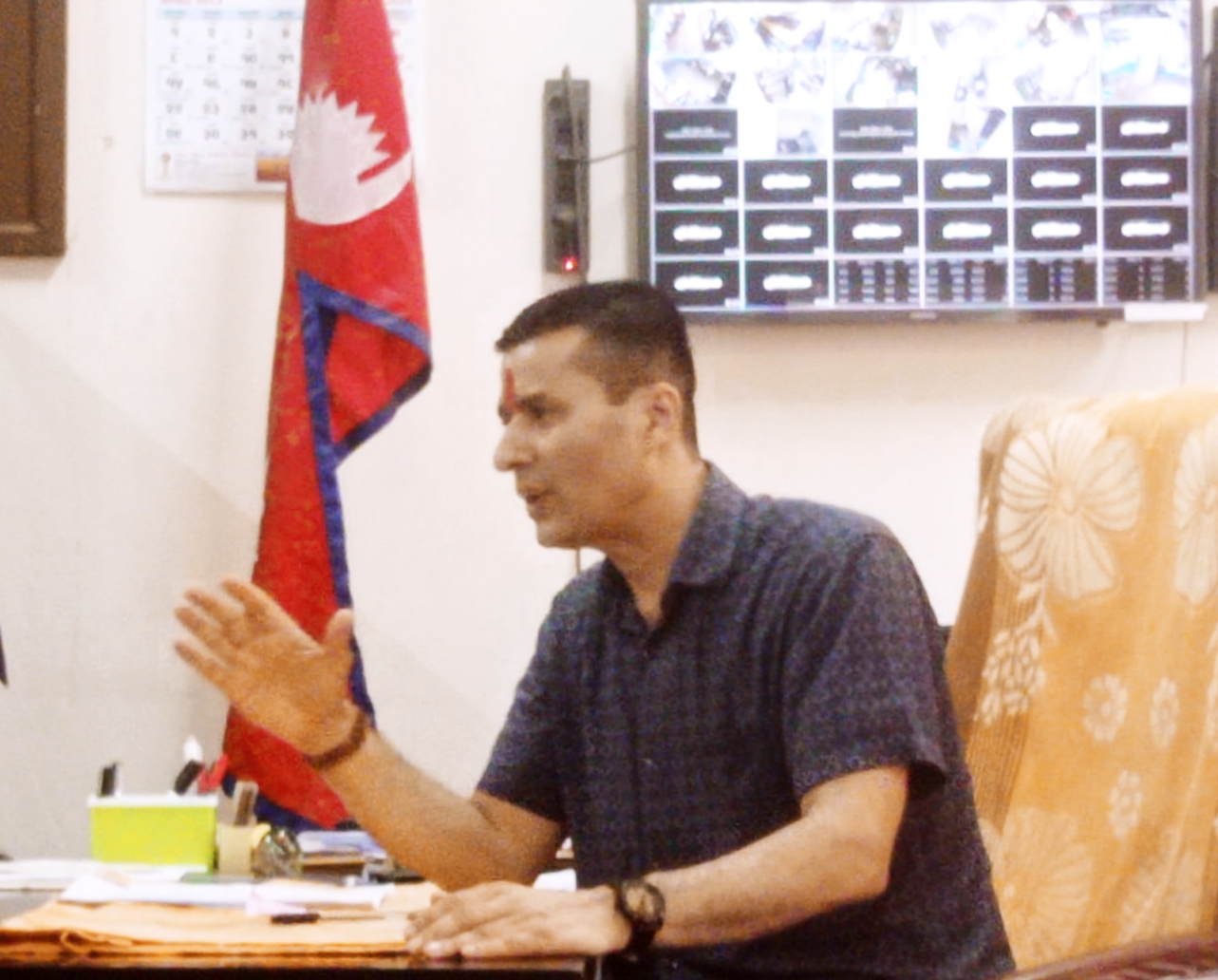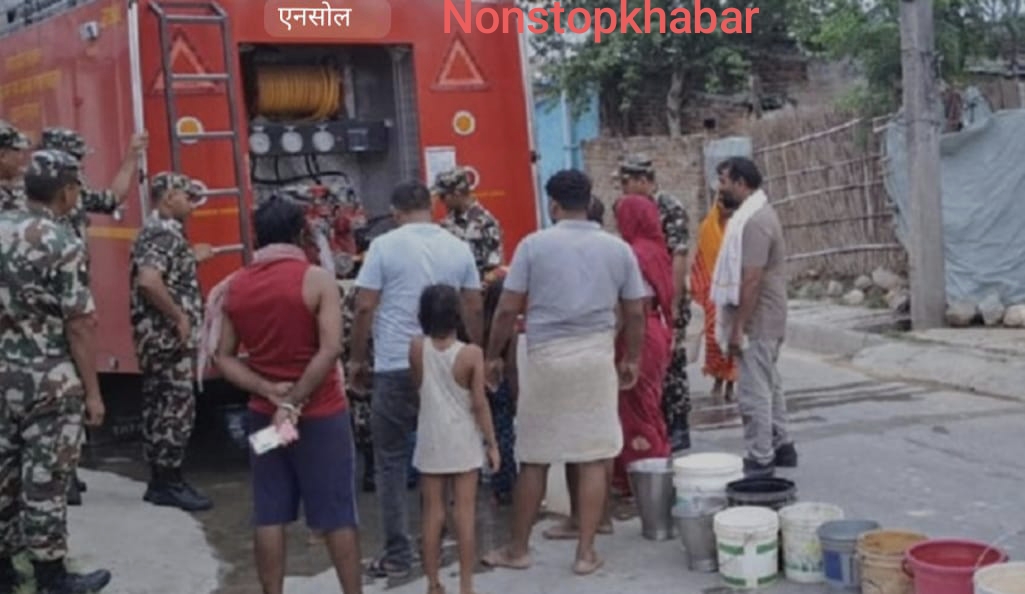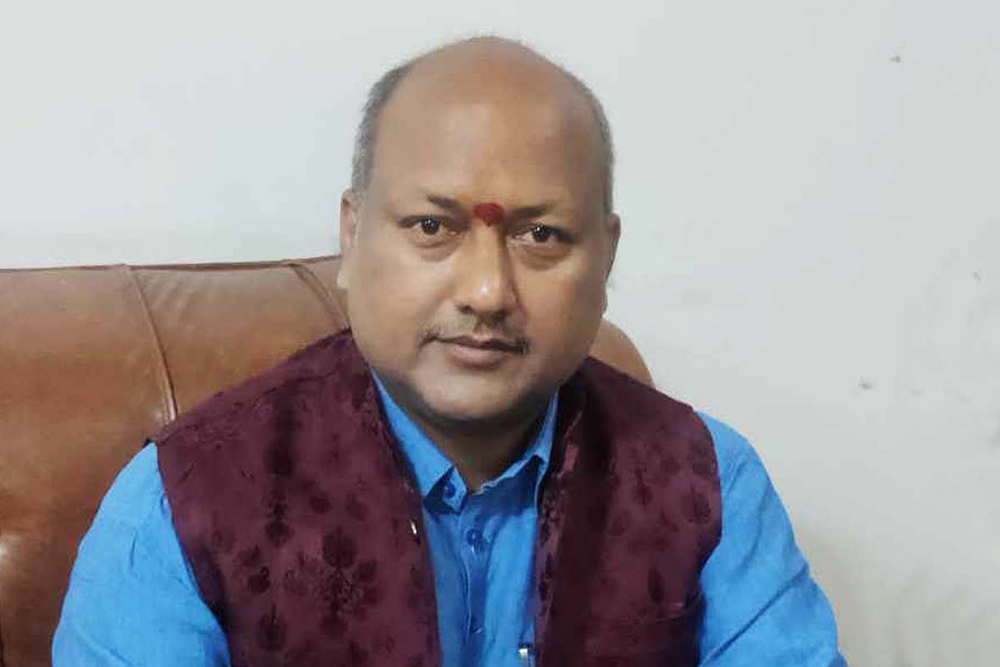23 Falgun, 2073 (6 March, 2017): Nepal’s second largest political party, CPN-UML was conducting its mass assembly in Gajendra Narayan Singh Industrial Area at Basbitti, Saptari as part of its ‘Mechi-Mahakali Campaign’. Meanwhile, cadres of Madhesi Morcha, who had announced ‘prohibition’ of the CPN-UML from entering Madhesh were staging a protest some 300 meters away at Maleth Chowk. A clash ensued at around 4:45 pm between the Morcha supporters and the security forces as CPN-UML Chairman KP Oli was about to end his speech.
Sanjan Mehta died on the spot in police firing while Pitambar Lal Mandal and Anand Shah succumbed to bullet injuries the same day while receiving treatment. Likewise, Birendra Mahato and Inardev Yadav died while undergoing treatment at BP Koirala Institute of Health Sciences on 8th and 10th March respectively. According to Chief District Officer Krishna Bahadur Katwal, among those 35 injured protestors, 5 died while 4 are undergoing treatment (as of 2nd April 2017). Similarly, 14 police personnel and 31 Armed Police Force (AFP) personnel injured during the scuffle have returned to work after treatment.
After the incident, the Ministry of Home Affairs called back the then Chief District Officer Uddhav Timilsina, Chief Superintendent of Police Divesh Lohani, Deputy Superintendent of Police Dan Bahadur Karki and Superintendent of Armed Police Force, Jay Bahadur Khadka. They have been replaced by Krishna Katwal, Anuragh Dwivedi and Ramadhar Yadav respectively. Meanwhile, the Regional Police Office, Biratnagar formed an investigation committee under the coordination of Senior Superintendent of Police, Uttam Karki with Superintendent of Police Bhim Prasad Dhakal and Superintendent of Police Bidyanand Majhi as members.
How did the incident take place?
By 4:45 pm, all UML leaders had finished addressing the mass meeting except UML Chairman K P Oli. He was addressing the mass when party Secretary Yogesh Bhattarai (upon receiving the information of gunfire) notified him about the incident. Considering the situation, Oli shortened his speech. According to intelligence agency sources, initially some 300 Madhesi Morcha cadres had gathered in Maleth. The number had reached almost 15 hundred when the incident occurred with an estimated 1,000 Morcha cadres at the southern gate of the Industrial Area, some 400 at the eastern gate and more than a hundred congregated near the western gate. Intelligence sources said around 3,600 CPN-UML cadres, including three thousand from Sunsari and six hundred from the adjoining areas had assembled in the meeting. Niranjan Jha, central committee member of CPN-UML’s youth wing, Youth Forum, claimed Madhesi Morcha cadres thrashed scores of UML supporters, including elderly people and women on the way barring them from attending the CPN-UML mass meeting. He said, “Upon knowing this, we took to retaliation.”
SP Dibesh Lohani, who has been called back to Kathmandu after the incident said around 12 hundred security forces, comprising 750 police and 450 APF personnel were deployed in the assembly venue and the incident site. Likewise, 700 police and 500 APF personnel were called from neighboring districts. Security forces had received ‘orders’ from ‘higher authorities’ to open fire only if the situation went out of control. Roughly 450 police and 250 APF personnel were deployed at Maleth Chowk. Lohani said the situation went out of control when groups of demonstrators not necessarily under the control of the Morcha leaders moved towards the assembly venue and tried to climb the wall of the industrial area by breaking the cordon.
A junior police officer deployed at the incident site informed that some demonstrators snatched SP Jay Bahadur Khadka’s pistol during the scuffle. Security personnel, however, succeeded in recovering the pistol in no time. Soon they ‘opened fire’ at the demonstrators. The demonstrators also snatched a walkie-talkie from a junior police officer. It has not been recovered as of 17th March.
The officer said, “I can say that the postmortem and the investigation committee reports will confirm that the deaths have not been caused due to police firings.” Sources claimed that out of the 90 rubber bullets they possessed, police fired only 9. However, security forces used several tear gas shells. CPN-UML lawmaker Rewati Raman Bhandari said, “As we exited from the assembly venue, the sky was foggy because of the use of tear gas shells.”
CDO Uddhav Timilsina, who has been recalled by the authority, said that security personnel resorted to firing only when the situation went out of control. He, however, denied unmasking the details as to which security agency opened fire. Timilsina was appointed CDO on 2nd March soon after the transfer of immediate past CDO Baldev Gautam.
According to Himal Newspaper’s Saptari reporter Shrawan Dev, most of the Morcha leaders were arrested before the situation intensified. “The number of security personnel was notably higher than demonstrators. Casualties could have been averted,” he said raising concern over the excessive use of force. According to Avadesh Jha, reporter with Kantipur Publication, the crowd could have been controlled by the use of water cannon. Likewise, sharing the experience of his involvement in rescuing the injured, Shyam Sunder Yadav, reporter of Nepal Television said, “Despite my profession as a journalist, I started helping the injured since my humanitarian demeanor triumphed over my profession as I could not tolerate barbaric attack on the protestors.” Local reporter for Avenues TV, Vaijnath Yadav was demonstrative about his feelings saying, “I am a Madhesi. I am dark complexioned. But I am a Nepali first. If everyone had a sense of national allegiance, the situation would have been different.”
Chairperson of CPN-UML Sunsari, Dwarika Lal Chaudhary raised concern over the use of excessive force. Chaudhary said, “The program had almost ended. Since the demonstrators had congregated at the southern side, UML supporters could have exited from the northern side. Analyzing the overall situation, there was no need to open fire.” The previous mass meeting held by CPN-UML in Itahari was successfully managed by a team led by Chaudhary. In addition to this, the party had organized mass meetings in Inaruwa and Jhumka. The corner meeting at Laukahi, however, was cancelled on request of the administration.
Meanwhile briefing the parliamentary session, Home Minister Bimalendra Nidhi justified the police action saying that they were ‘forced to act’ considering the adverse situation. He said, “Security forces acted on compulsion to avert unpleasant incident since protestors were moving towards the venue with homemade weapons and petrol bombs.”
According to CPN-UML Saptari Chairperson, Govinda Neupane, Morcha cadres were deployed in three layers – youth in the first layer, local leaders in second layer and sharp-shooters equipped with bombs and weapons in the third layer in Maleth. He also alleged some journalists of ‘conspiring’ against UML by disseminating one-sided news to defame the party.
(Listen to what eye-witnesses and relatives of victims have to say)
Why was the water cannon (brought from Kathmandu) not used to control the scuffle? Consider what CDO Katwal had to say without elaborating: “It was because of technical complication”. The one and only water cannon in Nepal was brought to Saptari one day earlier to the site.
Helpless people paying the price
One of the deceased 24 years old Sanjan Mehta got married nine months ago. His father Laxman said, Mehta, a graduate, was planning to appear the Lok Sewa (Public Service) examination. Another victim, Birendra Mahato, a former police, had been living at Maleth with his in-laws. A father of three daughters and a son, he came out of his house to buy candies for his children.
Anand Shah, a senior health worker was shot dead when he was returning home from an anti-polio campaign. Likewise, 56-year-old Pitambar Mandal was a street food vendor while Inardev Yadav was a farmer.
In fact, he was mourning his father’s death and was on his way to invite his relatives for rituals. According to Chhote Lal Yadav, Vice Chairman of Youth Force Saptari, Sanjan and Birendra were not active members of CPN-UML but were party supporters. Likewise, senior health worker Anand shah was involved in Saptari district-level Nepali Congress-affiliated organisation of health workers.
Locals claimed police took control of Sanjan and shot him at close range on his head when he was rescuing an injured cadre. The post mortem of all the deceased was carried out at the BP Koirala Institute of Health Sciences (BPKIHS). Forensic Chief of BPKIHS, Sivendra Jha said all the victims have been shot above the waist adding that Sanjan died of ‘blast injury’. Blast injury is caused when someone is shot at a close range.
Local reporters said that security personnel opened fire from behind the shields carried by their colleagues so that their identity would not be revealed. That is why there were bullet marks even on top of the trees, they said.
If the statements coming from eye witnesses and local security officials are to be considered, the incident worsened because the security forces had failed to keep patience. Security forces allegedly thrashed locals by entering the nearby villages. Human Rights activist Mohana Ansari blamed security forces of using excessive force despite being tolerant. After four days of observation, she said, “Those who died are in fact murdered. The government should be answerable.”
Fear, delusion and reality
Speaking at a program in the capital a day after the incident, CPN-UML Chairman KP Sharma Oli accused the protestors of possessing socket bombs, grenades, spears, swords and other weapons. Likewise, UML district Chairperson Govinda Neupane claimed that around 50 people, who entered the district via Goberdanda on 3rd March with weapons were also in the demonstration. The claims of CPN-UML leaders further substantiated when two pressure cooker bombs were recovered from the incident site. A CPN-UML central committee meeting held the next day concluded that the incident was part of conspiracy to murder CPN-UML senior leaders.
Were these claims true? According to local security authority, except for some petrol bombs, there was no evidence to substantiate claims that protestors used grenades and socket bombs. Claims that a large number of people equipped with weapons had entered the area were also untrue. According to intelligence report, the Morcha had plans to spill engine oil on the road with intent to make fatal accidents of the vehicles carrying CPN-UML leaders. “However, our investigation did not find any such evidences. The information was simply a rumor,” said Devraj Limbu of Central Investigation Bureau, Saptari.
Meanwhile, a bomb disposal team of the Nepal Army deployed to defuse two pressure cooker bombs found out that it was a hoax with red and blue wires and some sand inside them. “A leaflet of Madhesi Liberation Front was recovered from the site,” said Lieutenant Colonel Dambar Bohara. Security personnel found pressure cooker bombs earlier as well with leaflets bearing names of armed group led by Jay Krishna Goit. “There is an amiable unity between Morcha and the armed group. Whenever there is any such incident, Goit publishes a press release claiming responsibility to bail out Madhesi Morcha,” argued UML district Chairman Neupane.
The CPN-UML program initially scheduled to be organized at Rangashala was later shifted to the industrial area. Fireworks could be heard at Rangashala since a week before the program. Likewise, the Morcha had earlier planned to put loud speakers in the neighborhood to frustrate UML’s program. Locals said around 20-25 Morcha cadres went around the village threatening people of dire consequences if they attended the program. Earlier on 22nd February and 2nd March, some Morcha cadres barged into the meeting hall and took to vandalism by tearing the minutes and threatening the leaders at Manraja and Dhikli, respectively. On 3rd March, they smeared black soot on the face of CPN-UML district Under Secretary Pratap Narayan Chaudhary. District Secretary, Shambhu Yadav, who was with Chaudhary, however, fled the scene to save himself.
A battle of vengeance and prestige
District Coordinator for Madhesi Morcha, Dinesh Yadav was determined to disturb the UML program while UML was resolute in holding the program in Rajbiraj. On 3rd March, during a meeting with both parties convened by the then SP Lohani, Dinesh Yadav had categorically stated that he would not be able to control the cadres if the program was held in Rajbiraj.
Security authorities had advised UML to shift the program venue to Kanchanpur or Roopnagar, both UML strongholds. Referring to the unhindered program in Itahari, security officials had recommended venues close to the highway for the program.
In fact, the Morcha was irate with the UML cadres, who had thwarted their program in Itahari on 22 November, 2015 by vandalizing the stage. Since then, these two parties have been at loggerheads. Morcha has been organizing phase-wise protest programs ever since the promulgation of the constitution on issues, including demarcation of federal states. On January 21, 2016, the Youth Force, CPN-UML’s youth wing, planned to organize “Terai Madesh Dialogue and Awareness Program” coinciding with Madeshi Morcha’s protest program at Rangeli, Morang. Morcha cadres took to sabotaging Youth Force’s program ensuing clashes with the security forces that claimed lives of three people –Draupata Devi Chaudhary, 62, Mahadev Rishidev, 45, and Shivu Majhi, 24.
This incident, including UML Chairman Oli’s derogatory comments against Morcha spawned hatred and hostility between the two parties. The Saptari incident has also been seen as a result of Morcha’s hostile attitude towards Oli and vice-versa.
In fact, personal ego of Morcha and UML local leaders played a vital role in the Saptari incident. Morcha district coordinator, Dinesh Yadav, was a former member of the ANNFSU, CPN-UML’s student’s wing. Central Secretariat member of Youth Force Niranjan Jha said that he and Yadav worked in the same committee as ANNFSU district chairman and central member respectively. Neupane said, “Suman Pyakurel, a CPN-UML central committee member, has a significant contribution to establish Yadav politically.” Several factors, including Morcha’s ‘instruction’ to change the program venue antagonized the relations between the two parties. In fact, both parties took it as an attack on their ego. CPN-UML then planned the meeting at the Industrial Area. According to Neupane, initially they were planning to organize the program near the highway at Rupani, a Morcha stronghold. “Therefore, considering the adverse situation, we decided to organize the mass meeting in the industrial area,” Neupane said. However, Yadav has a different story to say. Claiming that UML and the district administration declined his proposal to change the venue, Yadav alleged the administration of being ‘pro-UML’. He blamed the security forces of being brutal on the demonstrators. However, Morcha leaders accused the then CDO Uddhav Timilsina of ‘obeying’ the orders of CPN-UML leaders. According to Hari Kumar Shrestha, former Chairman of CPN-UML affiliated Local Workers’ Forum, Timilsina has been was affiliated with the forum as a consultant during Shrestha’s tenure.
Facts justify that the situation in Saptari was excitatory, but not out of control as claimed by the police administration. According to locals, professionals, political parties and some police officials, the casualties could have been averted without opening fire.
In fact, neither any senior Morcha leaders were present during the demonstration nor the protestors were in control of local leaders. Since the Morcha was planning to organize political protest against CPN-UML with three former prime ministers seated on the podium, senior leaders of the Morcha should have been in the demonstration. The protest would not have been so unruly had the Morcha leaders participated in the demonstration. The entire episode appeared that Morcha leaders merely wished to “expand the influence of the movement”. But, those who lost their lives in Saptari for the parties’ repute and politics of exclusion had nothing to do with UML’s mass meeting or Morcha’s protest.
